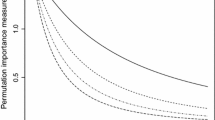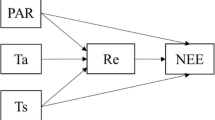Abstract
The Bayesian Maximum Entropy (BME) method of spatial analysis and mapping provides definite rules for incorporating prior information, hard and soft data into the mapping process. It has certain unique features that make it a loyal guardian of plausible reasoning under conditions of uncertainty. BME is a general approach that does not make any assumptions regarding the linearity of the estimator, the normality of the underlying probability laws, or the homogeneity of the spatial distribution. By capitalizing on various sources of information and data, BME introduces an epistemological framework that produces predictive maps that are more accurate and in many cases computationally more efficient than those derived by traditional techniques. In fact, kriging techniques can be derived as special cases of the BME approach, under restrictive assumptions regarding the prior information and the data available. BME is a more rigorous approach than indicator kriging for incorporating soft data. The BME formulation, in fact, applies in a spatial or a spatiotemporal domain and its extension to the case of block and vector random fields is straightforward. New theoretical results are presented and numerical examples are discussed, which use the BME approach to account for important sources of knowledge in a systematic manner. BME can be useful in practical situations in which prior information can be used to compensate for the limited amount of measurements available (e.g., preliminary or feasibility study levels) or soft data are available that can be combined with hard data to improve mapping significantly. BME may be then viewed as an effort towards the development of a more general framework of spatial/temporal analysis and mapping, which includes traditional geostatistics as its limiting case, and it also provides the means to derive novel results that could not be obtained by traditional geostatistics.
Similar content being viewed by others
REFERENCES
Alabert, F., 1987, The practice of fast conditional simulations through the LU decomposition of the covariance matrix: Math. Geology, v. 19,no. 5, p. 369–387.
Bilonick, R. A., 1985, The space-time distribution of sulfate deposition in the northeastern U.S.: Atmospheric Environment, v. 19,no. 11, p. 2513–2524.
Bogaert, P., and Christakos, G., 1997, Spatiotemporal analysis and processing of thermometric data over Belgium: Jour. Geophys. Res. Atmos., v. 102,no. D22, p. 25,831–25,846, 1997.
Christakos, G., 1990a, A Bayesian/maximum-entropy view to the spatial estimation problem: Math. Geology, v. 22,no. 7, p. 763–776.
Christakos, G., 1990b, Some applications of the Bayesian, maximum entropy concept in Geostatistics, in Fundamental theories of physics: Kluver Acad. Publ., p. 215–229.
Christakos, G., 1992, Random field models in earth sciences: Academic Press, San Diego, CA, 474 p.
Christakos, G., 1998, Spatiotemporal information systems in soil and environmental sciences: Geoderma, in press.
Christakos, G., and Hristopulos, D. T., 1998, Tractatus stochasticus: The study of spatiotemporal environmental health processes: Kluwer Acad. Publ., Dordrecht, the Netherlands, in print.
Cressie, N., 1991, Statistics for spatial data: J. Wiley, New York, 900 p.
Davis, S. F., and Lin, M. C., 1996, Basis functions for data representation, processing and computation: Advanced Concept Workshop, U.S. Army Research Office, Raleigh, NC, April 30–May 1.
Dowd, P. A., 1992, A review of recent developments in geostatistics: Computer & Geosciences, v. 17,no. 10, p. 1481–1500.
Haas, T. C., 1995, Local prediction of a spatiotemporal process with an application to wet sulfate depositions: J. Amer. Statistical Assoc., v. 90,no. 432, p. 1189–1199.
Jain, A. K., 1989, Fundamentals of digital image processing: Prentice Hall, Englewood Cliffs, NJ, 569 p.
Jaynes, E. T., 1983, Papers on probability, statistics and statistical physics, in Rosenkrantz, R. D., ed. Synthese library, v. 158: Reidel, Dordrecht, 434 p.
Journel, A. G., 1986, Constrained interpolation and qualitative information: The soft kriging approach: Math. Geology, v. 18,no. 3, p. 269–286.
Journel, A. G., 1989, Foundamentals of geostatistics in five lessions: American Geophysical Union, Washington, D.C., 40 p.
Lee, Y.-M., and Ellis, J. H., 1997, On the equivalence of kriging and maximum entropy estimators: Math. Geology, v. 29,no. 1, p. 131–151.
Olea, R. A., 1997, Understanding geostatistics—Class notes: Civil Engineering Department, Univ. of Kansas, Lawrence, KS, 290 p.
Polyak, I., North, G. R., and Valdes, J. B., 1994, Multivariate space-time analysis of PRE-STORM precipitation: J. Appl. Meterology, v. 33, p. 1079–1087.
SANLIB, 1995, Stochastic Analysis Software Library & User's Guide, SM/1.95: Dept. of Environmental Sci. and Engin., Univ. of North Carolina, Chapel Hill, NC, 93 p.
Schnoor, J. L. (ed.), 1984, Modeling of total acid precipitation impacts: Butterworth, Boston, MA, 222 p.
Author information
Authors and Affiliations
Rights and permissions
About this article
Cite this article
Christakos, G., Li, X. Bayesian Maximum Entropy Analysis and Mapping: A Farewell to Kriging Estimators?. Mathematical Geology 30, 435–462 (1998). https://doi.org/10.1023/A:1021748324917
Issue Date:
DOI: https://doi.org/10.1023/A:1021748324917




